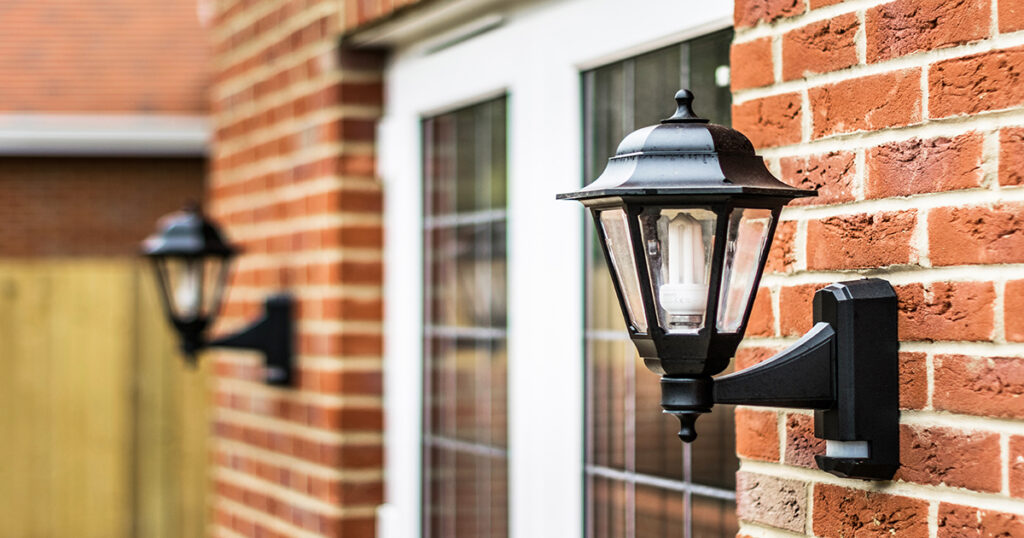Lighting can make or break a home’s ambiance and appeal both to prospective buyers as well as those who live there. Lighting is one area of the home that should not be overt. In fact, you likely won’t notice the lighting if it’s done well. You may only notice it if things are dim and dreary.
Interior Lighting
Indoor lighting can improve the overall quality of life of those inside the home. It can also add to the overall value of the property. If your existing home or one you may be interested in purchasing leaves a lot to be desired in the lighting department, there are four ways that you can brighten up your space.
- Update old fixtures.
If an existing home has outdated features, cosmetically it may be worth the investment to update or replace old fixtures. Besides the aesthetics of how much a refreshed fixture can improve a home, old fixtures may be working poorly and not at their full capacity. Replacing these yourself can be a pretty simple job, but if you aren’t electrically inclined, pay a professional electrician to do it safely.
- Accentuate natural light.
Natural light is something that is due in large part to the way your home sits on the lot and how many windows are available to let the light in. However, opening or altogether removing window treatments or blinds can help brighten up an interior space. Additionally, lighter paint colors, the use of mirrors, or keeping doors open may also maximize lighting.
- Switch out your bulbs.
Make sure you are firing up your fixtures and lamps at their maximum lumens. Check to make sure what the recommended voltage might be and lean into the lighter and brighter mood that making the switch can bring. It might surprise what a subtle, yet significant change going from 40 watts up to 75 or even 100 watts can do for a room. Decide if you prefer a cooler (more purple) or a warmer (more orange) tone bulb and seek to streamline all bulbs in the home so that there aren’t weird mixes of tones going on in a shared space.
- Consider dimmers.
For some, being intentional with lighting has less to do with making a space brighter, but more to do with creating a certain low light ambiance. Consider adding dimmer switches in parts of your home that you’d like more control over when it comes to lighting. Would a dimmer make a difference in areas like the dining room or over the soaking tub?
Exterior Lighting
Similar to interior lighting, exterior light can improve quality of life, value, and safety of the outside area of a home. Below are four suggestions for maximizing your exterior.
- Consider Curb Appeal
Lighting can play a huge role in anchoring your hard working landscaped beds or your entryway when it comes to curb appeal. When guests or passersby see your home in the dark, your lighting will focus on and highlight your home’s unique features.
- Play It Safe
When it comes to security, lighting can not only keep those moving about in the dark, safe from falls or losing their footing, but a well-lit home is also a deterrent to would-be creepers and criminals. Just like adding a dimmer switch for interior spaces, consider upgrading to light timers for outdoor flood or motion lights to come on whether you are home or not.
- Make Outdoor Spaces Useable at Night
Are there outdoor spaces just waiting to be used at your home after dark? What about a summer driveway cornhole tournament with the neighbors? Consider adding functional and ambient lighting to utilize porch spaces, set up an outdoor movie area, or even just light your path to the trash can or grilling area of the patio.
- Know the Tricks for Layering Light
The term “layered lighting” refers to combining different lighting elements to create a harmonious and visually comfortable space, which is achieved through the use of three important types of lighting: ambient, accent, and task lighting. These types and tricks are useful when it comes to outdoor lighting too. Focus on the overall ambiance with general lighting that illuminates the overall exterior area. This may be most easily achieved with flood lighting. Next, add a perimeter layer that all points to the house’s key exterior features. This covers porches, corners, walkways, and main angles of architecture. Finally, the task layer is reserved for taking on light specifically focused on particular areas that need to be well-lit.




